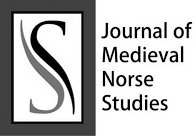Secularity and spirit sitting side by side: the pew-ends of St Óláv’s church
DOI:
https://doi.org/10.22478/ufpb.2595-9107.2024v7n07.70867Abstract
The aim of this article is to explore the religious, social, and political reasons for the elaborate decoration of the pew-ends of St Óláv’s church in the Faroe Islands. Óláv Haraldsson was a Norwegian king who made his last stand at the battle of Stiklestad in 1030. The king’s sainthood was solidified with his canonisation by the tenth-century Bishop Grimketel. A growing Norwegian political influence in the Faroes fostered the growth of Christianity. The church of St Óláv was built circa the twelfth century. Inside the church of St Óláv, on the Faroese island of Streymoy, once sat a set of beautifully carved wooden pew-ends. After six hundred years, eighteen of these pew-ends now sit in the national museum in Tórshavn. Their carvings depict various imagery, including escutcheons and religious figures, such as the apostles. The general lack of sources written about the Faroe Islands, as well as the Islands’ small population, has led to a lack of research in academia surrounding Faroese history. The carvings and decorations offer information on life in the medieval Faroe Islands. With little being written on these bench ends, this article hopes to analyse the religious, social, and political spheres to indicate reasons for the pew-ends’ decoration in the first place. Ultimately the religious, social, and political contexts of the time are the reasons why these pew-ends were decorated with the carvings that they have.
Downloads
Downloads
Published
Issue
Section
License
The author (s) of the original submitted undertake to comply with the following:
- All authors are publicly responsible for it.
- The authors claim that this original is their own and that they assume full responsibility to third parties, whether moral or patrimonial, by reason of its content, stating that the work does not infringe any intellectual property rights of third parties.
- The author (s) agree to the copyrights of the original to Scandia Journal, to which they grant permission for its reproduction, editing and online publication.
- The author (s) grant their copyright of their original to the Scandia Journal, licensed under the Creative Commons Attribution License, which allows the sharing of this work with the acknowledgment of their authorship.
- The author (s) have permission and are encouraged to cite and distribute their original.



